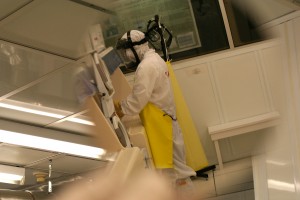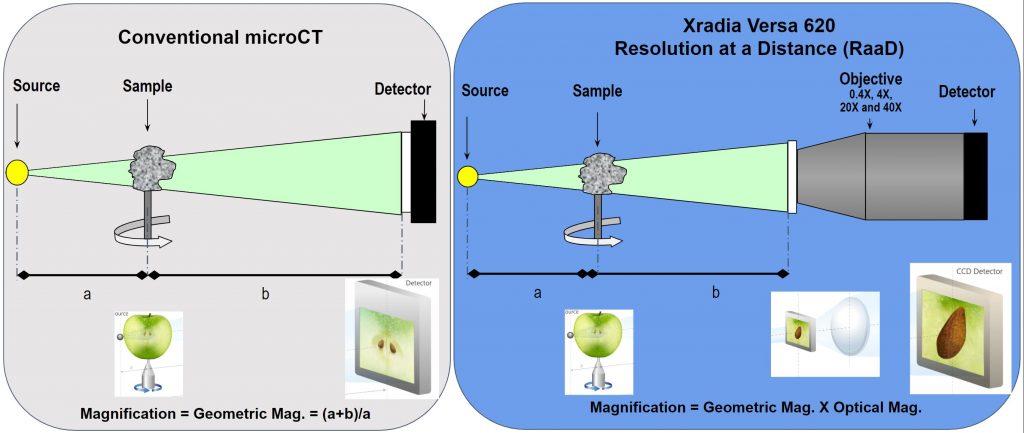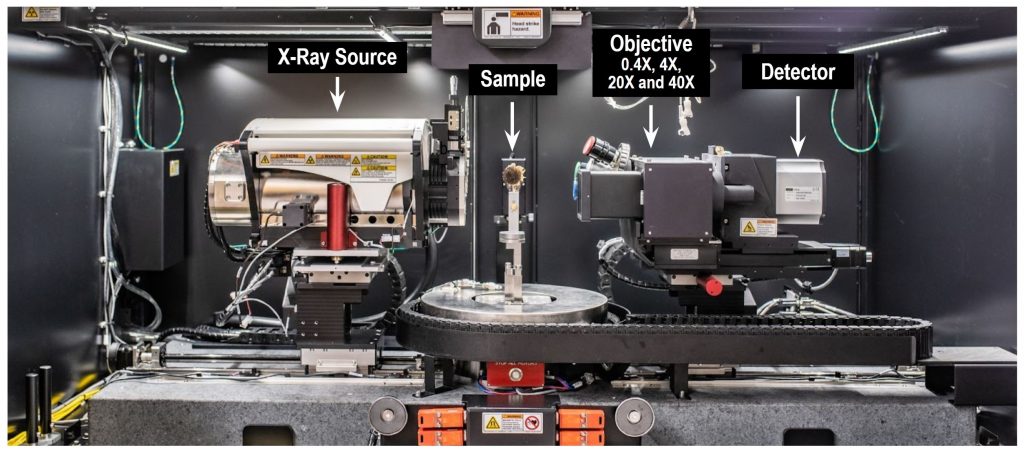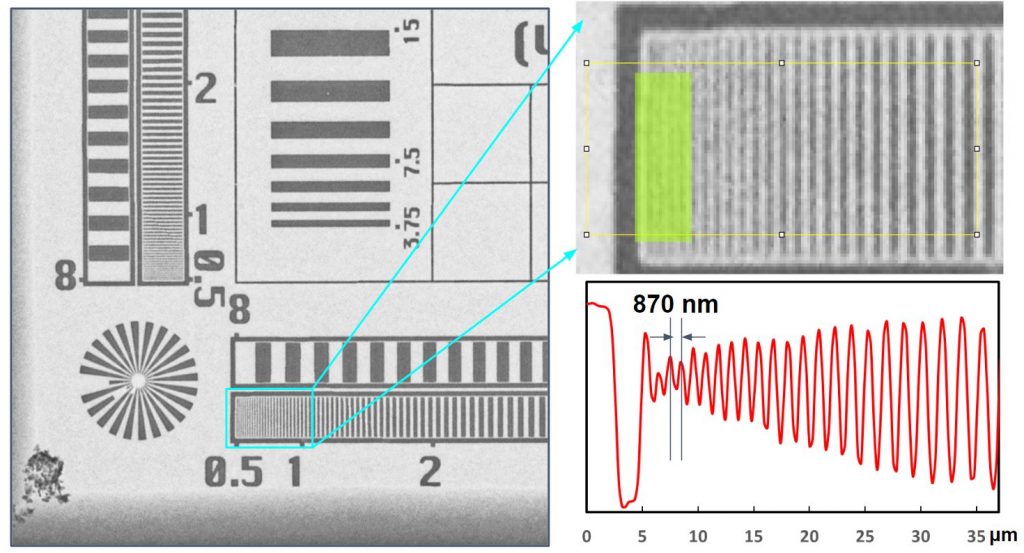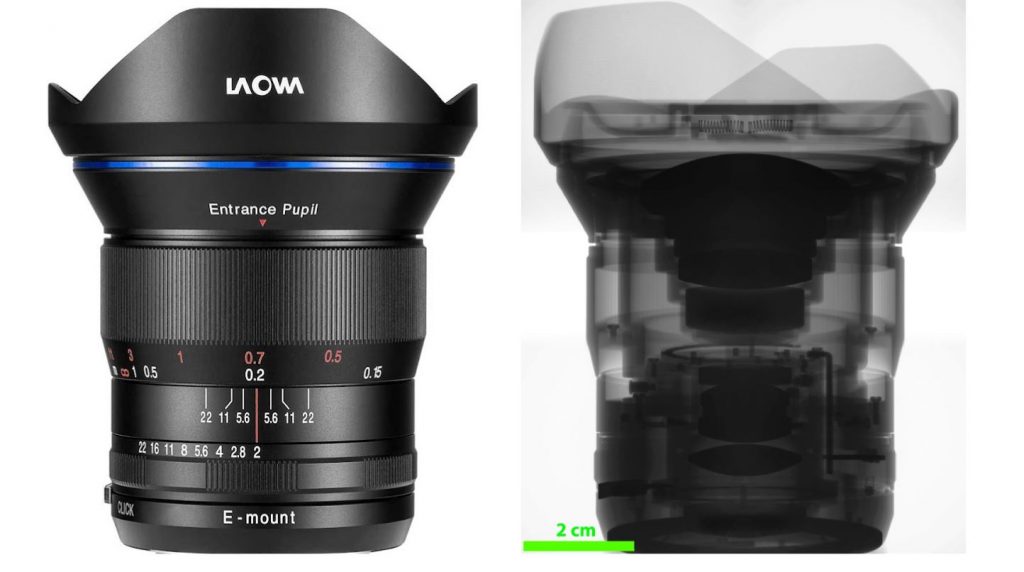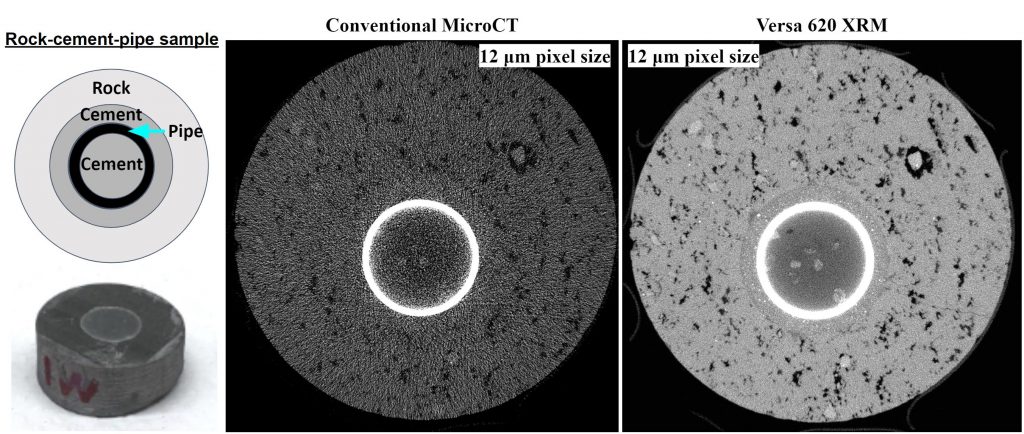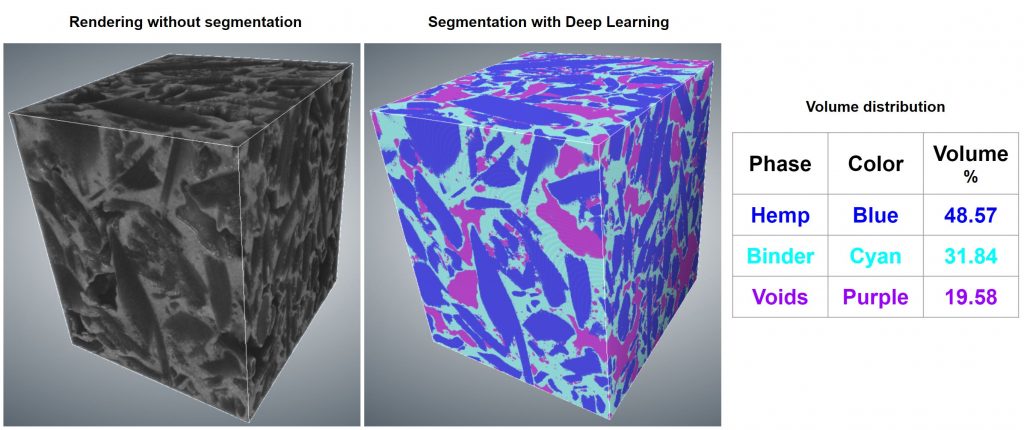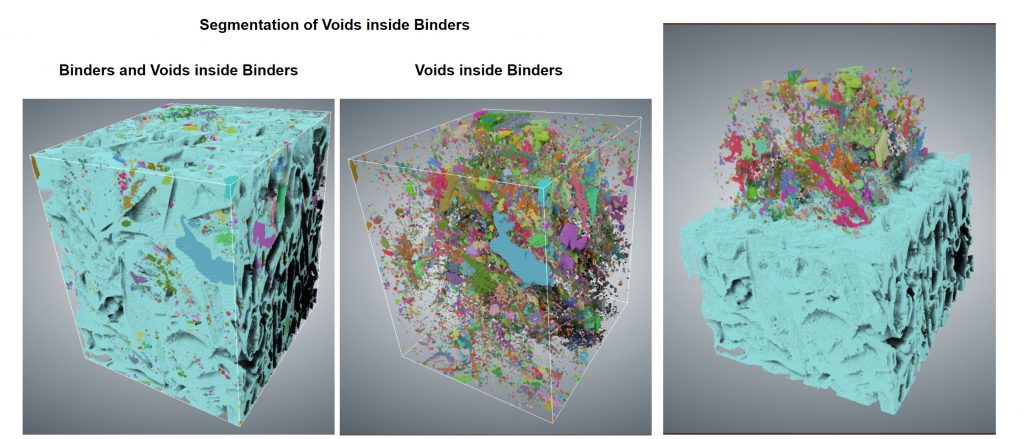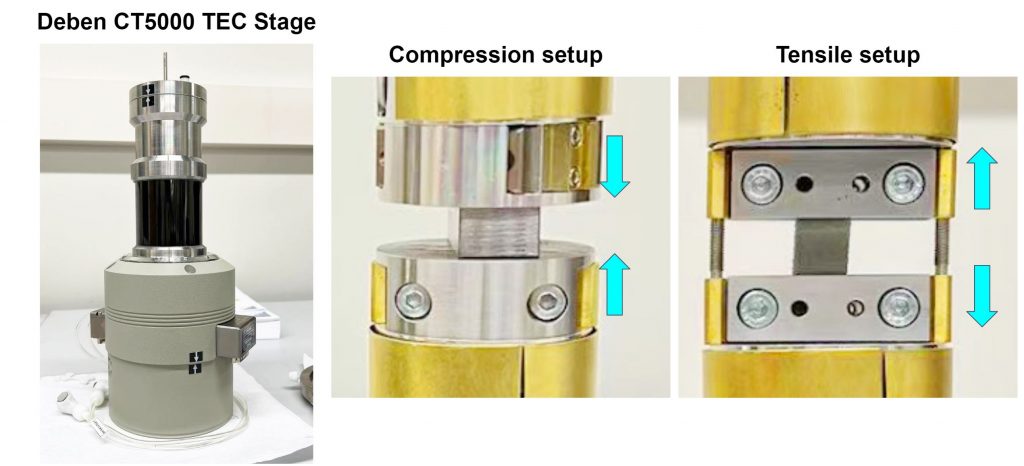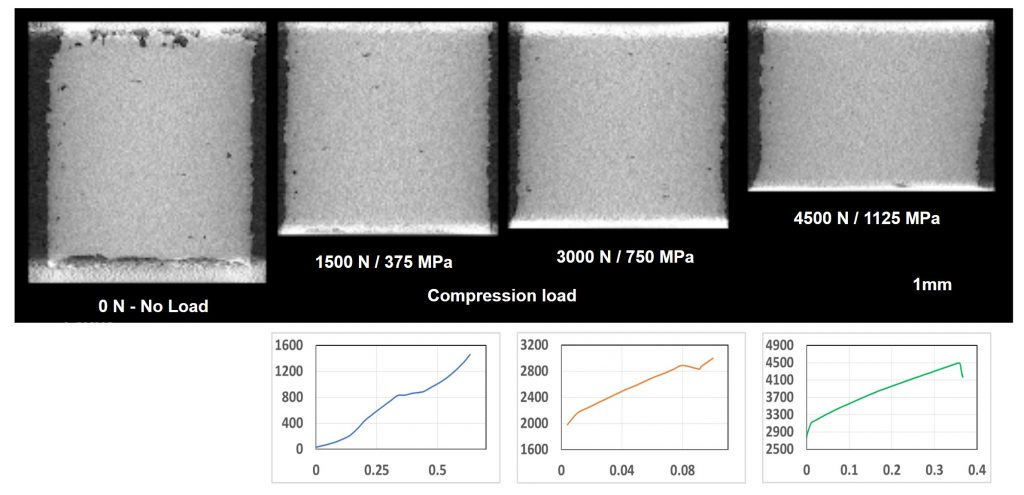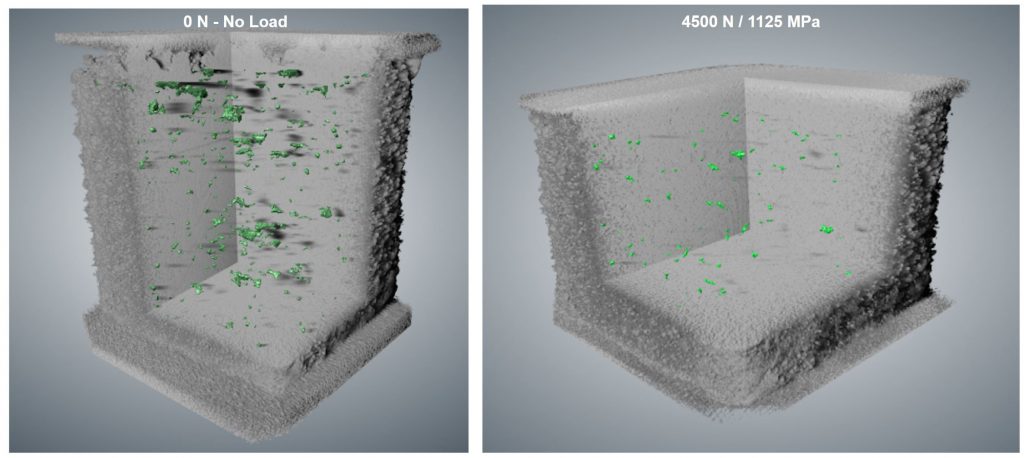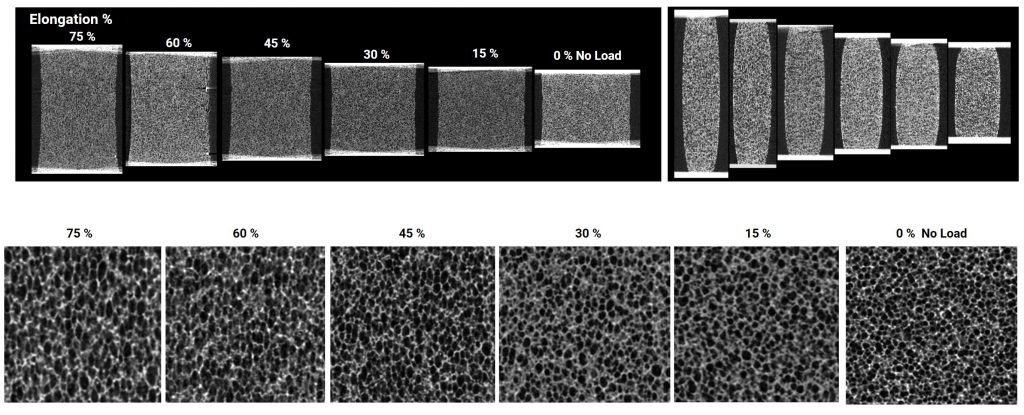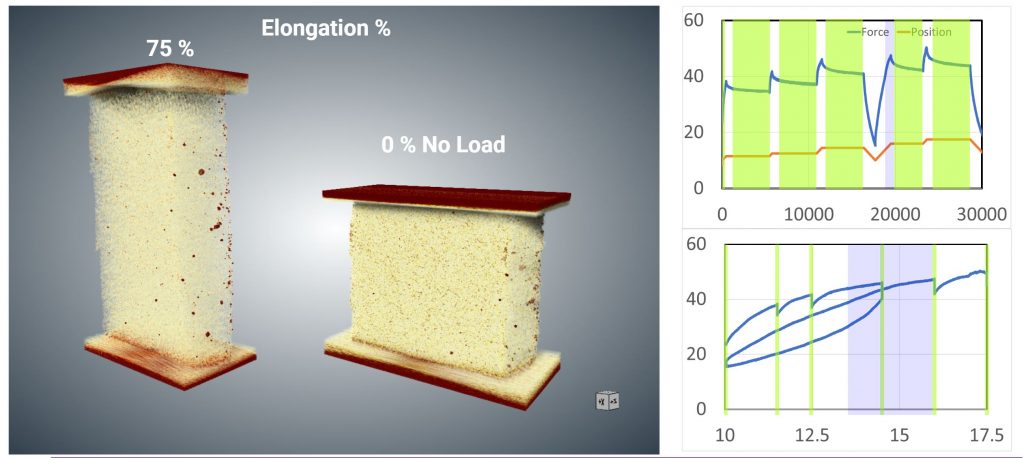The nanoFAB is pleased to update that the in-situ testing stage is fully commissioned on the Zeiss Xradia Versa 620 X-Ray Microscope (XRM). The Deben CT5000 TEC load cell/stage provides mechanical (both tensile and compression) and thermal tests. The maximum load is 5000 N and temperature range is -20°C to +160°C. Advanced segmentation is also developed and available on the DragonFly process software, especially with the build-in Deep Learning algorithm.
Taking the advantages of the two-stage magnification/Resolution at a Distance (RaaD) setup, the Zeiss Xradia versa 620 provides the best solution for in-situ analysis, negating all the limitation of achievable spatial resolution and acquisition speed on the conventional micro-CT.
Two-stage magnification / Resolution at a Distance (RaaD)
Unlike conventional micro-CT, the Versa 620 uses a two-stage magnification architecture to enable high spatial resolution imaging at large working distances for a diverse set of sample sizes and types. Images via the initial geometric projection are cast onto a scintillator, converting X-rays to a visible light image which is then optically magnified by microscope optics before acquisition by a CCD detector. 0.4X, 4X, 20x and 40X objectives are available to provide voxel size range from 50 μm to 0.3 μm. This two stage magnification architecture not only minimizes the aberration caused by the high geometric magnification, but also increases the image intensity thus improving scan speed.
A spatial resolution better than 500 nm is achieved from a grating standard.
Samples with size up to tens of centimeters can be imaged too. Below is a 2D image of a Venus (Laowa) 15mm F2 lens.
Below is comparison of scan results of a downscaled wellbore cement sample from a conventional micro-CT and the Zeiss Versa 620 XRM, with identical scan conditions (pixel resolution, beam energy and scan time). Due to the two-stage magnification/RaaD setup, the Versa 620 provides much better results in terms of spatial solution, contrast and signal-to-noise ratio, which are critically important to understand the cement integrity in wellbore barrier systems at the microscale.
Sample Courtesy: Jason (Xinxiang) Yang, Prof. Ergun Kuru, Civil and Environmental Engineering Department, University of Alberta
Segmentation (Deep Learning)
While standard thresholding is a quick and simple segmentation method, it is difficult for components with low contrasts. The build-in Deep Learning algorithm on the DragonFly 3D processing and visualization software provides effective segmentation. An example of advanced segmentation by Deep Learning is shown from a hemp concrete sample, consisting of three components: Hemp, Binder and Void. Not only the three components were successfully segmented, but also the voids inside and outside binders can be separated.
Sample Courtesy: Ahmed Al-Tamimi, Prof. Vivek Bindiganavile, Civil and Environmental Engineering Department, University of Alberta
Deben in-situ mechanical/thermal tests
- Compression Analysis
Morphological changes of voids/pores under compression loads in a 17-4 PH stainless steel sample printed on a 3D METAL PRINTER CREATOR 250.
Sample Courtesy: Prof. Ahmed Jawad Qureshi, Department of Mechanical Engineering, University of Alberta
- Compression and Heating Analysis
Visualization of formation and evolution of micro-cracks in a subsurface sandstone plug under compression loading and heating
Sample Courtesy: Dr. Amir H. Haghi, Prof. Rick Chalaturnyk, Civil and Environmental Engineering Department, University of Alberta

- Tensile Analysis
Visualization of deformation of the cellular structures inside the open-cell polyurethane foams through repeated load-unload experiments
Sample Courtesy: Cass (Haoyang) Li, Prof. James Hogan, Department of Mechanical Engineering, University of Alberta


